Hispanic Heritage Month Spotlight: Meet Three Inspiring Hispanic Space Station Engineers
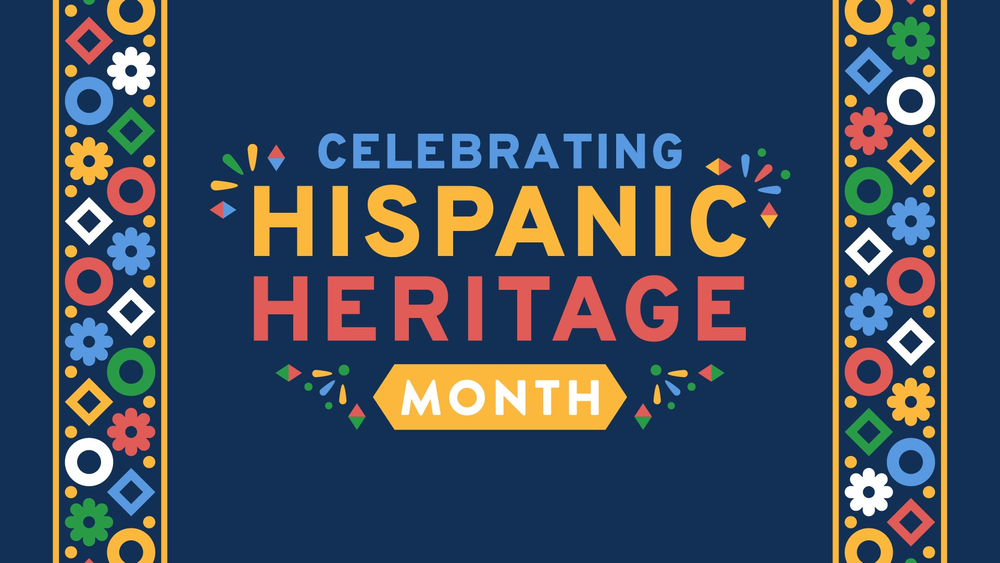
Hispanic Heritage Month is a time to celebrate the incredible contributions of Hispanic and Latino individuals in various fields. At NASA, those achievements are truly out of this world. The International Space Station Program commemorates the occasion by honoring three tenured Hispanic team members who embody the spirit of exploration and innovation and the commitment to excellence that defines NASA. Read on to learn more about the inspiring stories of Commercial Portfolio Manager Yuri Guinart-Ramirez, Increment Manager Ivan Anchondo, and Marcella Mendoza, a flight lead in the program’s Transportation Integration Office.
***
Yuri Guinart-Ramirez
Yuri Guinart-Ramirez is a commercial portfolio manager within the program’s Research Integration Office. Her responsibilities include developing and monitoring contract mechanisms that enable payload developers to support research investigations on the International Space Station. She also works on the InSpace Production Applications Portfolio, which helps private companies develop new materials and technologies on station that could have beneficial applications here on Earth.
“As a little girl growing up in Mexico, I remember climbing to the rooftop of our house to look up at the night sky,” said Guinart-Ramirez. “I would sneak my dad’s favorite pair of binoculars and a World Atlas which had a constellation map to help me identify stars and constellations. I have always had a sense of awe and fascination about space.” A career in space initially seemed out of reach for Guinart-Ramirez since there were few space-related opportunities in Mexico at the time, but her brother’s subscription to Final Frontier magazine provided an idea for a way forward. She read an article about NASA and its plans to build the space station that also included a list of college and university degrees that could lead to a career at the agency. She chose to study aerospace engineering and, for the first time, could see a path to achieving her dream.
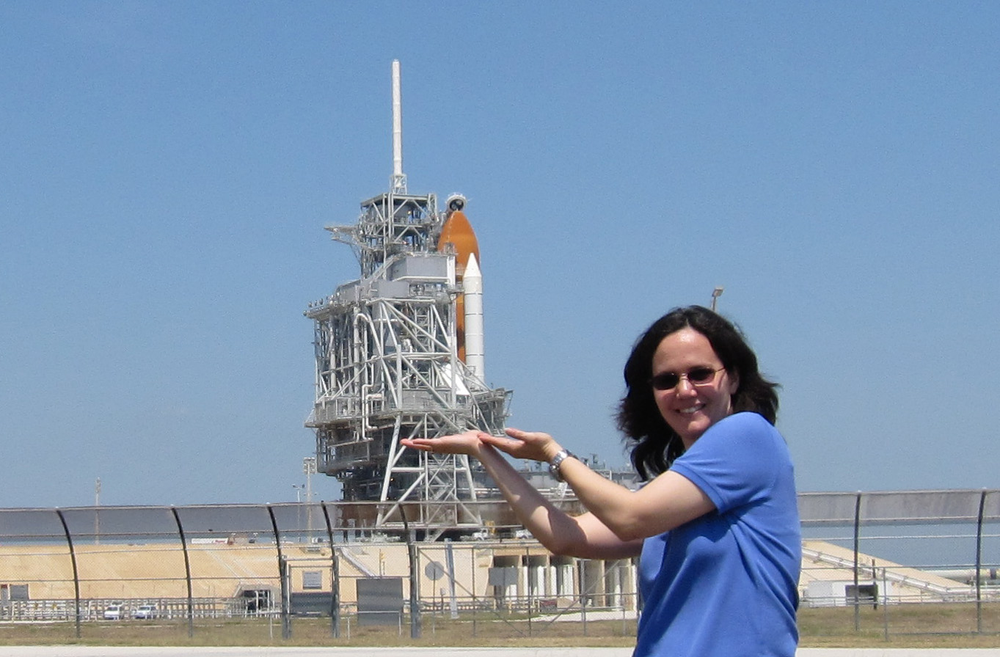
“One aspect of my Hispanic heritage is that there is always a way to make things happen if you persist, adapt, remain flexible, and look for opportunities,” she said. “And of course, there’s music! That Latin-American musical rhythm seems to always be with me to help me smile, even through the difficult times.” Guinart-Ramirez added that she had strong role models at home, and both her mother and father not only demonstrated an incredible work ethic, but also provided unconditional support to help her reach her dreams, no matter how far they seemed.
Reflecting on her journey at NASA, Guinart-Ramirez shares that she has faced a number of challenges, including a particularly memorable experience that occurred when she was serving as the acting chair for the Flight Program Working Group (FPWG). A hailstorm at NASA’s Kennedy Space Center threatened to disrupt a space shuttle mission to the International Space Station, but FPWG members worked together to quickly rearrange upcoming shuttle flights to prevent significant mission delays. “Communication across all parties was pivotal. It was challenging to integrate all the inputs and reach a consolidated recommendation to bring to the program,” she said. This experience highlighted for her the importance of clear communication, teamwork, and adaptability to overcome unexpected challenges in mission planning and execution.
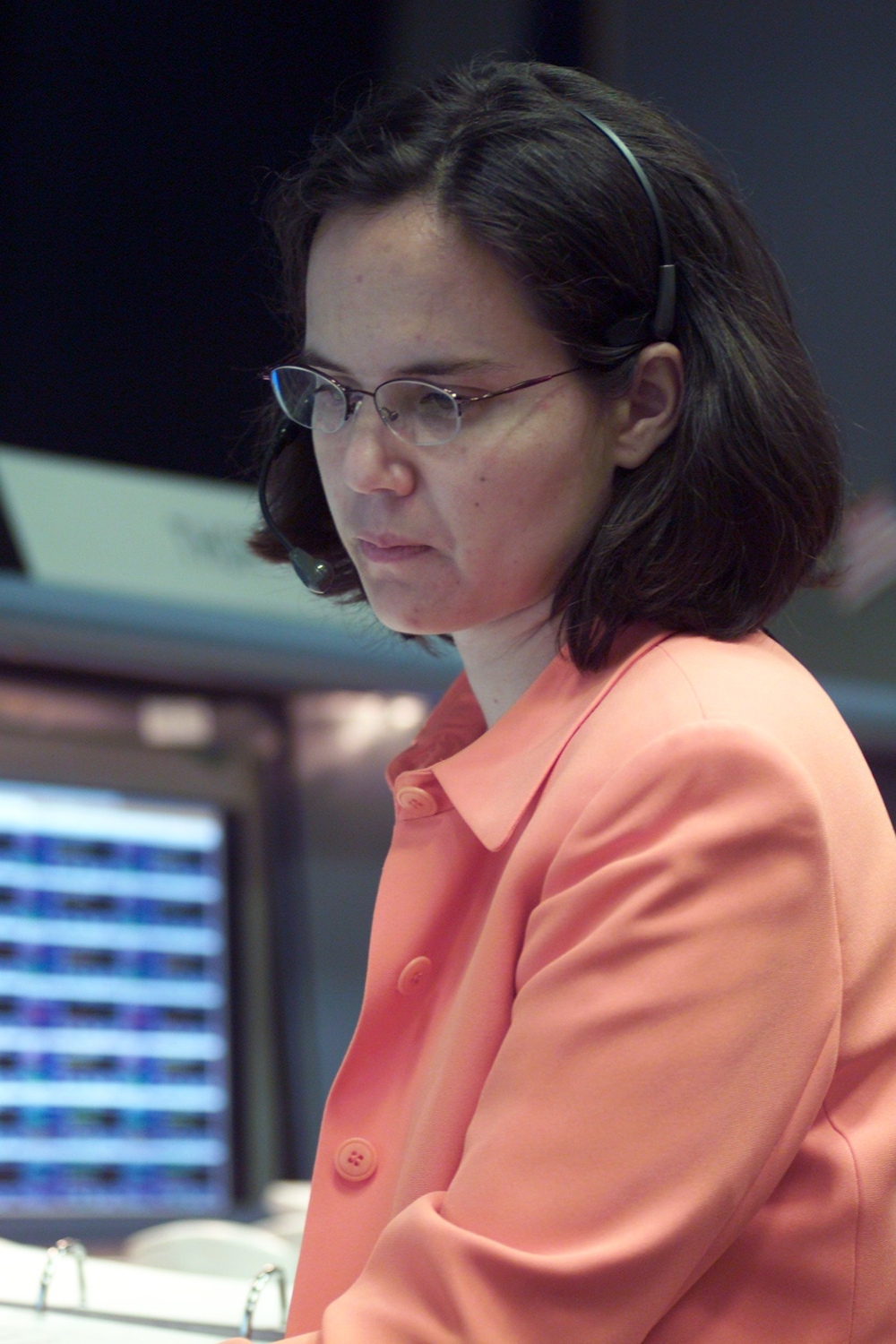
***
Ivan Anchondo
Ivan Anchondo plays a pivotal role as an increment manager for the space station program (an increment is also known as an expedition). His responsibilities include collaborating with program and operations teams to develop meticulous plans for executing expedition objectives. This entails coordinating requirements and fostering relationships with NASA's international partners. During expedition operations, Anchondo is at the forefront, providing direct support to the station program office while leading a dedicated team at the station management center.
“NASA and space were always exciting ideas growing up, but I think learning about the planets kept me looking forward to a career in space exploration. Space shuttle launches had a lot to do with it, too,” Anchondo said. Working at NASA did not become an attainable goal for him until his family immigrated to the United States from Chihuahua, Mexico. “In college, the possibility of working at NASA became real as I continued to pursue my bachelor’s degree in mechanical engineering and after I became a U.S. citizen,” he said. His interest in math and science made engineering a good fit and “being part of space exploration was an awesome goal to pursue,” he said.
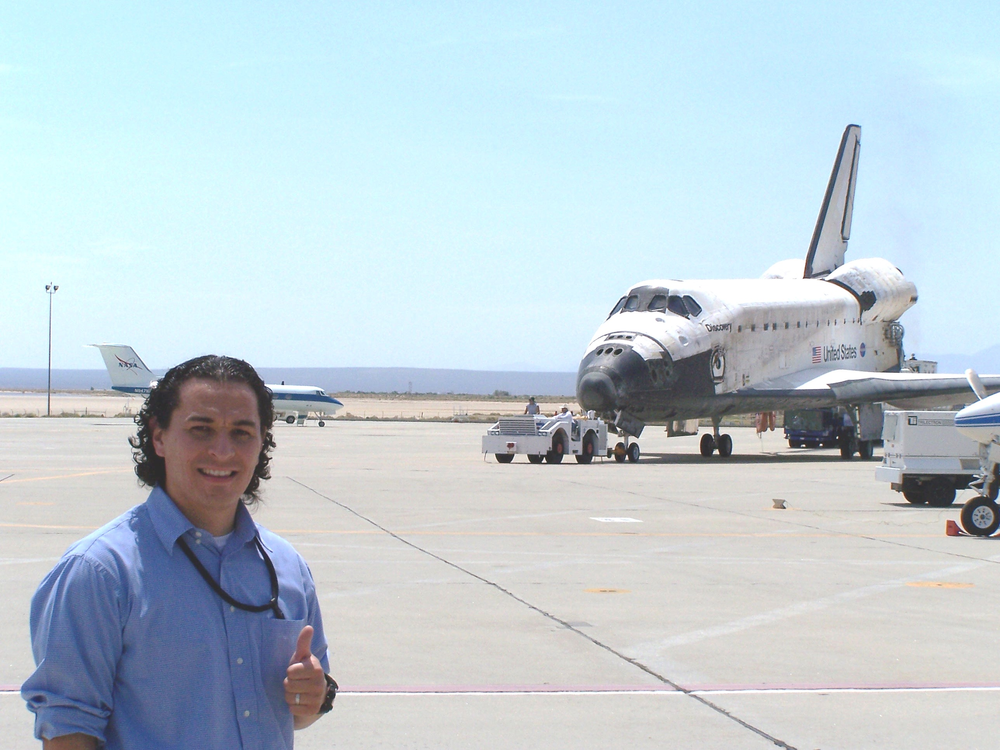
Anchondo openly acknowledges that he has faced moments of self-doubt and uncertainty during his career, yet he also believes that taking on new challenges is critical to personal and professional growth. He said that investing time and effort in learning and infusing his personality into his work has been instrumental to his professional advancement.
Anchondo said a memorable moment in his NASA career was also one of its greatest challenges. Following STS-13/19A, an anomaly prevented the International Space Station Thermal Control Team from activating a newly installed ammonia supply tank. After two weeks of discussion and troubleshooting, the team executed a deep cooldown of a nitrogen regulator that enabled the tank to re-engage and begin to function again without requiring a spacewalk. “It was a huge win for the team based on solid engineering, good timing, and a little bit of luck,” he said.
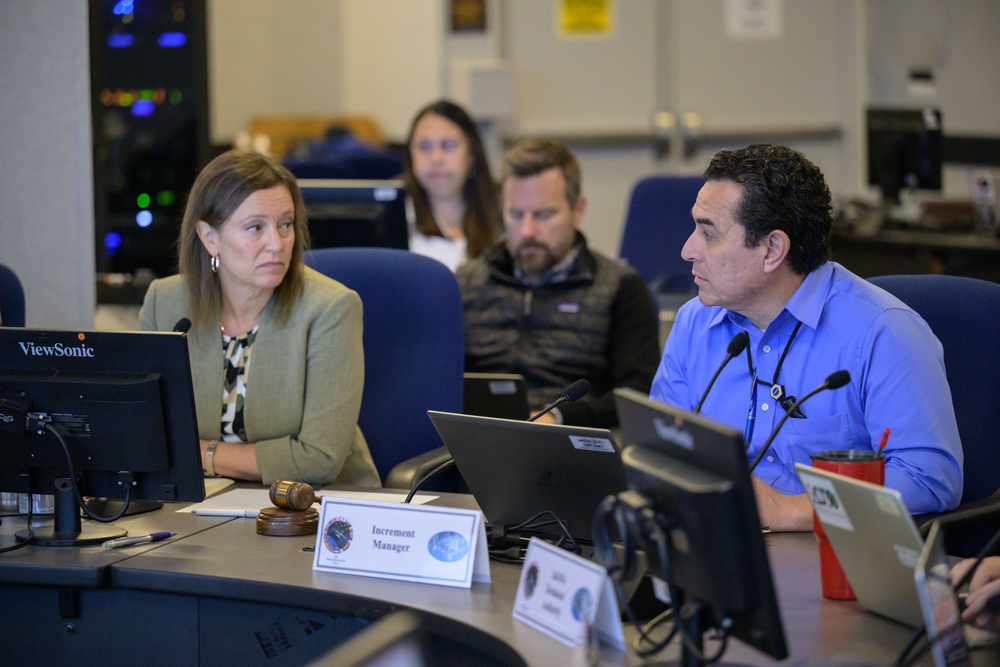
To young Hispanic individuals aspiring to work in the space industry or at NASA, Anchondo offers a resounding message: "Don't think it's not possible." He also underscores the importance of preparing for opportunities and seizing them when they arise.
***
Marcella Mendoza
Marcella Mendoza primarily serves as a liaison between NASA and Northrop Grumman, helping the agency and the contractor work to execute successful Cygnus cargo missions to and from the orbiting laboratory. Mendoza’s job requires her to understand Cygnus spacecraft processing and integration activities and how they are progressing, enable seamless connections between Northrop Grumman and NASA for issue resolution, and proactively monitor for areas of risk and improvement for future flights.
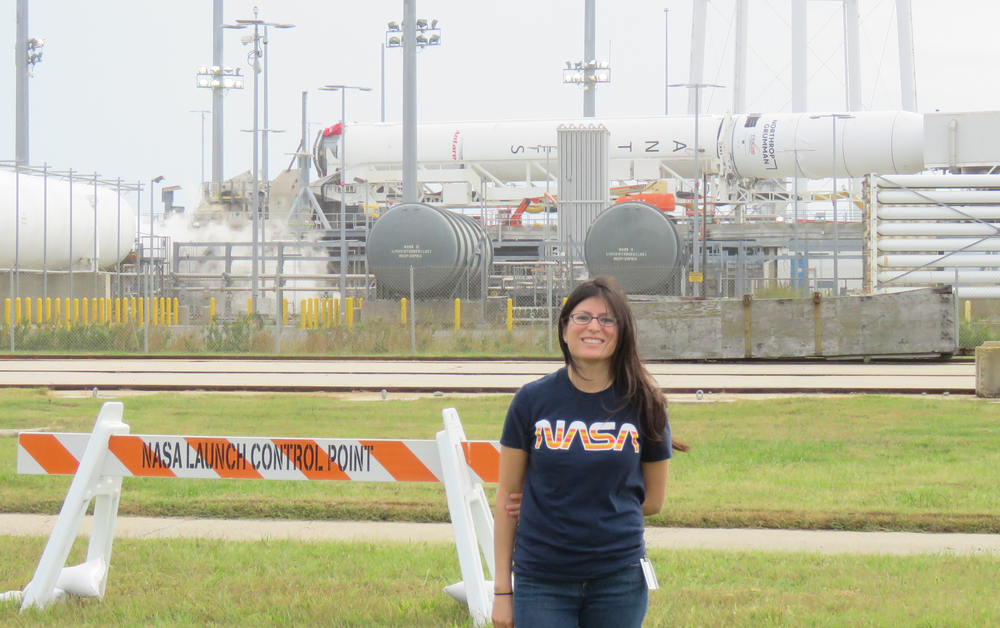
She has had quite a few memorable moments in her time supporting the space station. “I’ve been inside spacecrafts being built, watched cargo being loaded while on the launch pad, performed dry runs of procedures in mockups with astronauts, been on console in visiting vehicle control centers during launch, and seen launches in person,” she said. “I truly love my job and feel so privileged to perform it.”
Like Anchondo, Mendoza said she struggled with self-doubt when she first started working at NASA. “I was very afraid that I would not be successful at my first job. I was concerned about not being good, smart, and capable enough,” she said. Mendoza added that after accepting her position, she gave all her assignments her very best, knowing that the level of effort she put in was all that she could control. She believes it is important to maintain a consistent work ethic, which includes attending classes, completing homework, and performing every task – even menial ones – to the best of your ability. “People will notice who they can depend on by your action,” she said. “Before you know it, you’ll build up a good reputation that can open up new opportunities.”
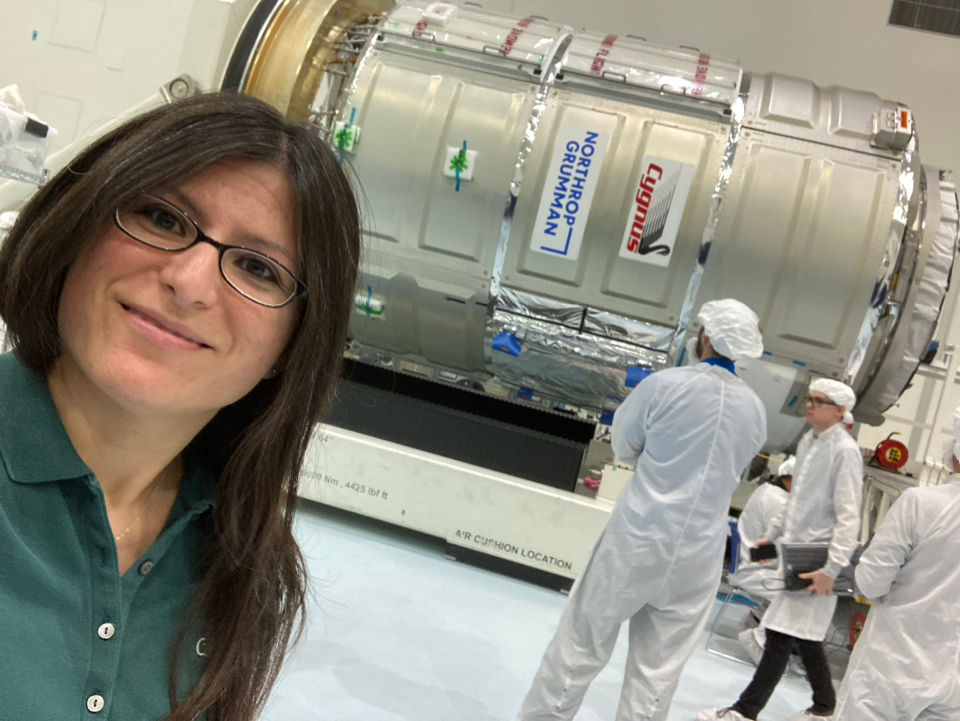
Marcella Mendoza with the pressurized cargo module for Cygnus NG-20 being processed at Kennedy Space Center. Credit: Marcella Mendoza
***
These stories encapsulate the spirit of Hispanic Heritage Month and its celebration of culture, inspiration, and diversity. The International Space Station Program honors individuals like Guinart-Ramirez, Anchondo, and Mendoza who continue to remind us that space has no limits, and neither do the contributions of Hispanic professionals to NASA's noble quest for the stars.

Keep up with the latest news from the International Space Station by following @space_stationand @ISS_Research on Twitter, and the ISS Facebook and ISS Instagram accounts.







